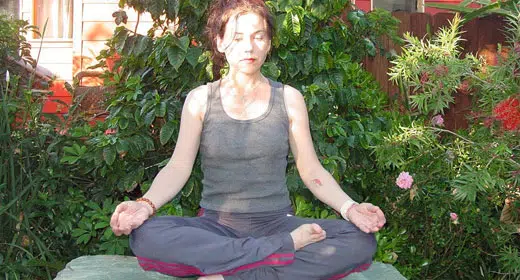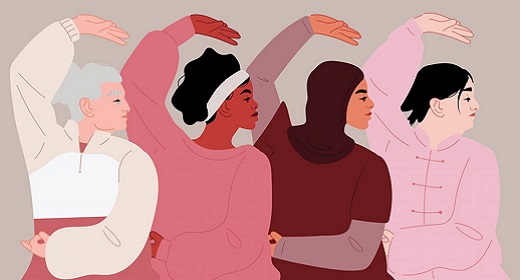by Nancy Deye: Tai chi is a low-impact traditional Chinese medicine practice that engages the mind and body…
The benefits of tai chi include increased mindfulness and focus, improved balance, and relief from chronic pain.
For hundreds of years, traditional Chinese medicine has prescribed tai chi to address health concerns.
Today, in the Western world, this system of slow, fluid, low-impact movement has become popular as a gentle yet effective exercise for overall fitness, relief from chronic pain, and improving quality of life. But of all of the benefits of tai chi, the most touted is improved balance.
The practice has been scientifically linked to a list of live-longer, live-better benefits that have particular relevance as we advance in age. Tai chi combines precise physical movements that benefit alignment with a mental component that strengthens focus and mindfulness.
Tai chi is essentially about awareness. It teaches us that our attention to specific elements provides quality in each movement and in each step, resulting in better coordination and stability. Three core elements of tai chi guarantee improved balance.
Tai Chi for Improving Postural Alignment
Correct postural alignment is one of the most important, yet often overlooked considerations of balance. Poor posture leads to misalignments and compressions of the spine, which result in rounded and stressed shoulders, neck tension, headaches, and countless other ailments that compound over time.
As we age, this structural misalignment becomes our reality. Imagine the head, about the size and weight of a bowling ball, sitting on hunched shoulders and a misaligned spine. Picture the gait that results. We’ve all seen this image. Instead of walking, it appears to be more of a controlled falling with the upper body leading and equilibrium compromised. One of the benefits of tai chi is rediscovering correct alignment, which is the gateway to better balance.
Tai Chi for Building Confidence in Movement
With the body aligned, natural movement can follow. One of the most important aspects of tai chi for balance is the awareness of how the body shifts weight. The slow movements of tai chi allow for an understanding of weight transference, the ability to transfer strength from one leg to the other.
Clear distinction between the supporting leg and the non-supporting leg is the first step towards mobility, smooth coordination, and the development of balance. The deliberate shifting of weight begins by bending the knee to drop the center of gravity and fully planting and rooting the foot to stabilize the supporting, heavy leg.
With one leg supporting all of the body weight, the unweighted leg is free to move, and then to plant, root, and receive weight. Imagine an hourglass: the glass as the leg and the sand as the weight. Imagine the weight slowly moving from one leg to the other, filling it up until it becomes the supporting or weighted leg. And so it continues, from one step to the other.
Keeping an upright spine while concentrating on this continual weight shift results in coordinated and controlled movement. The slow, deliberate footwork brings awareness to what is physically happening in weight distribution and in sensitivity of foot placement. Because there is the constant interaction of weight shifting back and forth, tai chi practitioners find balance in various positions.
Once the rhythm is understood and it takes hold in muscle memory, it soon transfers into our daily life. By lowering the center of gravity, the core engages, leg strength increases, and confidence in movement builds.
Tai Chi for Mindfulness
To be fully attuned to movement, the mind needs to be steady and attentive. This type of mindfulness goes beyond a deliberate focus on what is happening. The quality of proprioception (the body’s ability to perceive its own position in space) plays an important role. With this, it is possible to remain present and absorbed. Mindfulness, through its power of keen awareness and observation, involves an internal energy. With mindfulness and concentration, body and mind are synchronized, allowing the body to move as one integrated, uninterrupted unit.
Tai chi unifies the body and the mind. Moving through slow, continuous postures, the core strengthens, muscles relax when not being used, breathing deepens, and the mind becomes calm. All of this happens while tai chi tones the muscles and lubricates the joints to generate increased flexibility, coordination, and balance. It teaches the importance of slowing down and paying attention. It offers steadiness in an unstable world. The benefits of tai chi extend far beyond the perimeters of the practice.









































